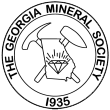Ad Hoc Tumbling Group
A Special GMS Group
for People Interested in Tumbling Rocks
The Ad Hoc Tumbling Group Meets
Third Tuesday
Every Odd Month
Many people, young and old, begin their rockhound journeys by tumbling stones. It is a great way to get into the hobby and there is so much to learn from tumbling.
The GMS Ad Hoc Tumbling Group meets every odd month via Zoom to talk about all things tumbling. If you are interested, you must be a member of GMS, and all members are encouraged to submit ideas for topics to cover.
The group also sponsors and runs an annual rock tumbling contest for novice and experienced tumblers. Winners are announced at our annual Mother's Day Weekend Rock Show.
If you have any questions about the Ad Hoc Tumbling Group, please send email to
Ad Hoc Tumbling Group Message
Date: Thursday, May 22, 2025Time: Social Time 7:00 pm, Meeting Starts at 7:30 pm
Speakers: Tumbling Contest Winners
Topic: Tumbling Contest
Location: Virtually via Zoom Link sent to members via email
Please take note of an important change to our May Zoom meeting date. Due to unforeseen circumstances, we've had to adjust the date from Tuesday, May 20th, to Thursday, May 22nd.
The reason for this shift is to allow the recent winners of our exciting tumbling contest to join us! They unfortunately have prior commitments on Tuesday the 20th, and wouldn't be able to join us; we don’t want them to miss out on the fun and fellowship.
We're really looking forward to celebrating their achievements with them and sharing some tumbling tips and tricks.
We apologize for any inconvenience this change may cause, and we hope you'll still be able to join us on Thursday, May 22nd, for our Bi-monthly Zoom Meeting. With social time starting at 7:00 pm, the meeting starts at 7:30. Watch your emails for the Zoom Link to this meeting.
Tim Hellinger
Co-Chair (co-chair open for volunteers)
Click below for a map and directions

Copyright © Georgia Mineral Society, Inc.
